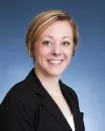Each week, Troutman Sanders' Federal Circuit review summarizes the Federal Circuit precedential patent opinions from the prior week.
This week:
- Delay Attributed to Applicant Conduct Under PTO Rule For PTA Calculations Does Not Require That Delay Actually Occurred
- Actual Rendered Services Are Required for Service Mark To Be "Used in Commerce" under Lanham Act
- Patentee May Not Recover Lost Profits of Its Licensees, Nor For Sales of Components Not Functionally Related to the Patented Invention
Delay Attributed to Applicant Conduct Under PTO Rule For PTA Calculations Does Not Require That Delay Actually Occurred.
Gilead Sciences, Inc., v. Michelle K. Lee, Deputy Director, USPTO, No. 2014-1159, 2015 U.S. App. LEXIS 2828 (Fed. Cir. Feb. 26, 2015)(Wallach, J.). Click Here for a copy of the opinion.
Gilead appealed from a decision granting summary judgment to the PTO on its calculation of the Patent Term Adjustment (PTA) period for U.S. Pat. No. 8,148,374. Gilead complained that the PTO improperly subtracted a period of applicant delay from the period of PTO delay when calculating the adjusted patent term. Specifically, the appeal asked whether "filing a supplemental IDS after submitting a reply to a restriction requirement constitutes a failure to engage in reasonable efforts to conclude prosecution of the application" under § 154(b)(2)(C). The statute states, in part:
(i) The period of adjustment of the term of a patent...shall be reduced by a period equal to the period of time during which the applicant failed to engage in reasonable efforts to conclude prosecution of the application.
The statute authorizes the Director to "prescribe regulations establishing the circumstances that constitute a failure of an applicant to engage in reasonable efforts to conclude processing or examination of an application." The PTO promulgated C.F.R. 1.704(c)(8), which in turn defined a failure to engage in such "reasonable efforts" to include "[s]ubmission of a supplemental reply or other paper, other than a supplemental reply or other paper expressly requested by the examiner, after a reply has been filed." The district court concluded that, under Rule 1.704(c)(8), a supplemental Information Disclosure Statement (IDS), when filed after responding to a restriction requirement, was a supplemental paper not requested by the Examiner, and counted against the applicant for purposes of the PTA calculation.
On appeal, the Federal Circuit rejected Gilead's argument that the statute permits a reduction in PTA only "in instances where the applicant's conduct 'actually delays the conclusion of prosecution.'" The court applied a two-step analysis under Chevron U.S.A., Inc. v. Natural Resources Defense Council, Inc., 467 U.S. 837 (1984), and concluded (1) Congress did not directly address whether a failure to engage in reasonable efforts requires conduct that actually causes delay and (2) the PTO's construction of the statute was reasonable.
Consequently, Gilead's interpretation was neither supported by the plain language of the statute nor by evidence of legislative intent. By the broad language of the statute, "Congress intended the PTO to employ its expertise in identifying applicant conduct demonstrating a lack of 'reasonable efforts to conclude processing or examination of an application." Therefore, "a reasonable interpretation of the statute is that Congress intended to sanction not only applicant conduct or behavior that results in actual delay, but also those having the potential to result in delay irrespective of whether such delay actually occurred." Because the PTO's interpretation of the statute was reasonable, the court affirmed.
Actual Rendered Services Are Required for Service Mark To Be "Used in Commerce" under Lanham Act .
David Couture v. PLAYDOM, Inc., No. 2013-1576, -1577, 2015 U.S. App. LEXIS 3135 (Fed. Cir. Mar. 2, 2015) (Dyk, J.). Click Here for a copy of the opinion.
Couture registered the service mark "PLAYDOM" pursuant to 15 U.S.C. § 1051(a) in 2008 and submitted a "[s]creen capture of [a] website offering Entertainment Services in commerce" as evidence of use of the mark. At the same time, Couture created a website (playdominc.com) offering writing and production services for motion picture film, television, and new media. However, no services were rendered to clients until 2010.
In 2009, Appellee registered for the identical mark and filed a petition to cancel the registration of Couture's mark, arguing that the registration was void ab initio for failure to use the mark in commerce as of the date of the application. The board granted the cancellation petition and Couture appealed.
To apply for registration under the Lanham Act, a mark must be "used in commerce," meaning a "bona fide use of a mark in the ordinary course of trade, and not made merely to reserve a right in a mark." For a service mark to be "used in commerce," the mark must be "used or displayed in the sale or advertising of services" and "the services are rendered." Here, the court concluded that, although services were advertised, there was "no evidence in the record" demonstrating that Couture actually rendered services to any customer before 2010. Because Couture's mark was not "used in commerce" at the time of registration, the court affirmed.
The court also rejected Couture's argument that the Board should have allowed him to amend the basis of the application pursuant to 15 U.S.C. § 1051(b)(1), to allege "a bona fide intention, under circumstances showing the good faith...to use a trademark in commerce." The court held that even though the rule provides procedures for substitution of a basis in an application, the rule "contemplates substitution during the pendency of an application, not after registration."
Patentee May Not Recover Lost Profits of Its Licensees, Nor For Sales of Components Not Functionally Related to the Patented Invention.
Warsaw Orthopedic, Inc. v. NuVasive, Inc., No. 2014-1480, 2015 U.S. App. LEXIS 3133 (Fed. Cir. Mar. 2, 2015) (Dyk, J.). Click Here for a copy of the opinion.
Warsaw sued Nuvasive for infringement of two patents related to spinal implants. Nuvasive counterclaimed for infringement of a patent related to a surgical instrument. At trial, the jury found that the asserted claims of Warsaw's '973 patent were not invalid (infringement was not disputed), the claims of Warsaw's '933 patent were infringed by Nuvasive under the doctrine of equivalents (validity not disputed), and the asserted claims of Nuvasive's '236 patent were infringed by Warsaw. On the verdict form the jury awarded Warsaw $101 million in total damages, labeled "Lost Profit Damages (with royalty remainder)" and specified royalty rates for each patent.
Both parties filed motions for JMOL or a new trial. Warsaw also moved for a permanent injunction against Nuvasive and for supplemental damages. Nuvasive challenged the jury's calculation of damages owed to Warsaw. All motions were denied by the trial court. The motions relating to liability and the calculation of damages due to Warsaw were appealed. The Federal Circuit affirmed all of the jury's findings on liability, but it vacated the damages award to Warsaw.
Warsaw does not practice its patented technologies. Instead, it receives three income streams. First, Warsaw sells "fixations" to Medtronic, and Medtronic includes them in spinal implant kits that embody Warsaw's patented technology. Second, Warsaw collects royalties from M Proc and Deggendorf for products that practice the patented technology. Third, Warsaw receives true-up payments from Medtronic. (These are post-hoc payments, required for tax reasons, to ensure Warsaw receives fair-market-value for its bargain). Warsaw's most significant income is from these true-up payments, by which Medtronic effectively remits 95% of its profits on the patented technology to Warsaw.
First, Warsaw argued it was entitled to lost profits from convoyed sales. Because of Nuvasive's infringement, Medtronic's sales of the patented technology were reduced, and Warsaw in turn lost profits on the sales of fixations to Medtronic. The Federal Circuit disagreed, because Warsaw failed to show a sufficient functional relationship between the fixations and the patented technology to justify lost profits from convoyed sales. Warsaw argued that the fixations completed Medtronic's kits for use in a fixation procedure, not that the fixations were functionally related to the patented implant itself. The Federal Circuit characterized this relationship as one of convenience or business strategy, rather than a functional relationship.
Second, Warsaw argued that it was entitled to lost profits for royalties it did not recover from M Proc and Deggendorf. Both companies were licensees who manufactured and sold the patented technology, and paid a royalty to Warsaw. Warsaw acknowledged that it could not recover the profits lost by the licensees, but argued that it could recover for the royalties it would have collected, but for Nuvasive's infringement. The Federal Circuit again disagreed, ruling that a patentee can only claim lost profits for the lost sales of a product or service the patentee itself was selling, not the sales of other companies. Thus, lost royalties cannot be "lost profits."
Third, Warsaw argued that reduced true-up payments caused by Nuvasive's infringement should be considered lost profits. Warsaw argued that the lost true-up payments represented a royalty from Medtronic to Warsaw for sales of patented products. However, it was unclear what payments were for the patented technologies and what payments were for management fees or licenses for other technologies. The Federal Circuit again disagreed, because lost royalties are not lost profits. Further, the evidence showed that the true-up payments were calculated on a company-by-company basis, rather than a technology-by-technology basis. This made it impossible to determine the portion of any true-up payments that should be attributed to the patented technology.
For all of these reasons, the Federal Circuit vacated the lost profit awards. It also questioned the jury's royalty rates in its "reasonable royalty" award and remanded for further consideration. The verdict form contained only a lump-sum amount of damages and a royalty rate. Critically, the jury did not define the period of time used to calculate the reasonable royalty. In the absence of a meaningful royalty rate, the Federal Circuit instructed the district court to conduct a new trial on damages.
**
Each week, we succinctly summarize the preceding week of Federal Circuit precedential patent opinions. We provide the pertinent facts, issues, and holdings. Our Review allows you to keep abreast of the Federal Circuit's activities – important for everyone concerned with intellectual property. We welcome any feedback you may provide.
The content of this article is intended to provide a general guide to the subject matter. Specialist advice should be sought about your specific circumstances.








